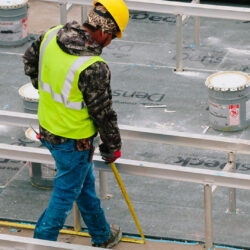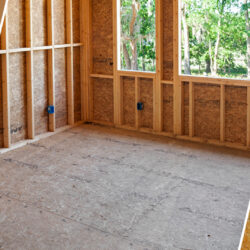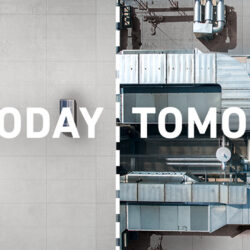Contractors live in a perpetual cycle of working to do more with less — particularly when it comes to manpower. So it’s no wonder prefabricated construction is on the rise, with experts predicting these methods will continue to gain momentum in the coming decades.
Among industry members surveyed, 88% said they had used offsite prefabricated components to some degree over the past 12 months, and 82% expected to use offsite construction just as much or more in the next year, according to a 2019 report by the National Institute of Building Sciences Off-Site Construction Council.[1]
Prefabricated, or offsite, construction makes it possible to construct an entire building, piece by piece, in an offsite, controlled location, and then reassemble those pieces onsite. Or, a contractor could construct only certain components of the building, such as the framing and foundation, onsite and then add prefabricated parts like walls and floors.
It’s worth noting that prefabricated construction is different from modular, which involves the construction of standalone units, such as a single room, that can be pieced together to make a building.
A labor shortage solution
The industry’s ongoing labor shortage is a key reason why offsite construction is growing at such a rapid rate. In the U.S, 80% of contractors report having a trouble finding qualified craft workers, according to the Associated General Contractors of America.[2]
“It’s hard to get any labor, much less skilled labor,” explains John Chamberlin, senior product manager for the DensElement® Barrier System.
Because most prefabricated construction takes place inside a climate-controlled building, laborers experience safer work conditions – as opposed to working atop scaffolds and elevated platforms, for example. That safety results in higher retention levels for contractors. “Offsite construction changes the situations where they’re working,” Chamberlin says.
With prefabrication, contractors also have fewer concerns about weather conditions, coordinating with other trades, or working around machinery on jobsites. And after prefabricating the same parts and pieces over and over, contractors can plan material types and quantities with greater precision. Prefabrication reduces waste and increases speed, saving contractors money in the long run. They complete jobs well ahead of schedule, which often translates to bonuses and incentives from owners.

Filling the innovation gap
The DensElement® Barrier System plays an important role in offsite construction by eliminating steps that otherwise slow down prefabricated construction process.
That’s particularly important because of an “innovation gap” in product development, Chamberlin explains. Product developers have been designing their building products to address labor shortages, yet they’ve overlooked the fact that prefabricated construction is expanding. Product manufacturers have given their products more weather flexibility and durability, including accessories like primers that make it possible to install the products in all sorts of conditions.
But for offsite construction, there’s a catch.
“All of these things essentially make site construction a little simpler, but also add cost to the products – and in an offsite situation, make the products unnecessarily slow,” Chamberlin says.
These products can withstand these environmental exposures. But as a result, the products take longer to dry. That creates problems for prefabricated construction, as floor space availability dictates how quickly you can build. “You can lose significant construction time simply in waiting for products to dry before being able to move or advance to the next phase. This can create the primary bottleneck for your entire job floor,” Chamberlin says.
The DensElement® Barrier System eliminates those delays. After you install the sheathing and seal the joints and seams, you’re finished. “You can move immediately to the next step. You don’t have to wait for things like drying or curing, or applying another product,” Chamberlin says.
Contractors can even go one step further and automate some processes through robotics and other methods. “You’ve saved time, you’ve saved labor, and you’re moving your project through the facility lightning fast,” Chamberlin says.
Getting projects finished faster means you can take on more projects over the course of the year. “You just keep growing your business because you have eliminated bottlenecks in your production process. DensElement® is uniquely suited for that kind of construction,” Chamberlin says.
And with all of the efficiencies prefabrication offers, the end result for contractors is an overall reduction in labor, cost, time and risk.
[1] https://www.nibs.org/news/432991/Off-Site-Construction-Council-Releases-Results-of-Industry-Survey.html
[2] https://www.agc.org/news/2018/08/29/eighty-percent-contractors-report-difficulty-finding-qualified-craft-workers-hire-0
This article is intended solely as general information. Ultimately, the design and detailing of any project, assembly or system is the responsibility of a professional, and all projects must comply with applicable building codes and standards. For information concerning the limited warranty for the DensElement® Barrier System, visit www.denselement.com. GP Gypsum disclaims any responsibility or liability for the architecture, design, engineering or workmanship of any project, assembly or system.









